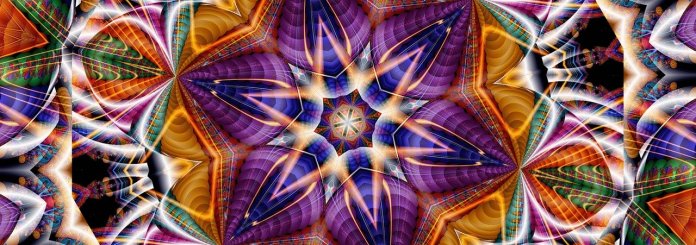What is a Mandala? Mandala is the Key to Understanding Yourself

A mandala can take on so many different forms that it would be impossible to list them all. In fact, you’ve probably interacted with mandalas in the past without even realizing it. These geometric shapes appear all over ancient temples, texts, and art. But what is a mandala? In order to gain an understanding of the mandala meaning, you have to be willing to gain a deeper understanding of yourself. We’re going to explore these concepts as we delve into the true nature of these incredible patterns.
What is a Mandala?
Let’s start with the basics: what is a mandala? The term can be used to mean slightly different things, but let’s start with the earliest versions. The earliest mandalas started appearing during the 1st century BCE when the term appeared in the Rigveda. We find that early Vedic rituals and Buddhist temples would create mandalas using a specific form: the shape would be a square with 4 gates, and within this square would be a circle.
Since then, the term has been adapted to refer to any spiritual practice that involves drawing a geographical pattern or shape as a representation of the universe, cosmos, a higher power, or one’s self. Each mandala can mean something completely different, and while some do carry general meanings, they are largely considered to be an individual practice often used for focusing the mind. Creating one isn’t dissimilar to meditation, in that your mind becomes free of thoughts through focusing on a single activity or action.
Would you like to know who your Protective Guardian Angel is?
In order to get in contact with your Guardian Angel and receive your FREE ANGEL READING, please fill out this form:
Mandala Meaning
Understanding the mandala meaning is a slightly more complicated task than understanding what they are. Each one can represent something entirely unique, and yet they are all connected by a similar string of consciousness. In one sense, a mandala represents connection, unity, peace, harmony, and wholeness. These are the energies that are put into each pattern and shape during its creation. At the same time, each one still carries its unique meaning and message.
Due to the ancient nature of these geometric connections to the universe, there is a range of different aspects that each one could cover. We find that they can represent a religion and religious belief, different sorts of meditation, cosmic order and being, psychological and emotional balance, peace and harmony, the cyclical nature of life and the universe, angel numbers and even the concept of God.
Different groups of people will carry out this practice for a different reason. For example, the paganistic Celts would create the Celtic cross, which is a type of mandala. To them, it would represent the three states of being: mind, body, and soul.
This pattern is also found in Nordic regions having been used by Vikings, and it has since become a symbol used by Christianity to represent the Holy trinity. Monks from Buddhism and other faiths will use the creation of mandalas as a way of meditating. Meanwhile, Muslims will demonstrate their devotion to Allah, Islam, or a specific ideal through this spiritual practice.
We now have a better understanding of the complex mandala meaning, but let’s explore some of the more specific types that exist in the world today.
Types of Mandala
While each mandala can carry a different meaning or function, there are generally considered to be three main types. We’ll explore each one in turn before considering how you can begin drawing your own!
The first type we’re going to discuss is one that serves to teach. They are used within religious and philosophical, and spiritual bodies to demonstrate the connections that each individual has to the universe. The student will be asked to create their own mandala in order to demonstrate what they’ve learned and to allow them to practice the act in a learning environment.
The second type serves to heal. This method relies less on strict lessons and designs, and instead allows the creator to simply follow their intuition, being guided only by feeling, emotion, and spirit. This type of mandala is more meditative in nature and instills a sense of calm and tranquility within the drawer. It allows the mind, body, and soul to enter a space of healing.
The final type we will look at is the sand mandala. This is less common than the others but is a major part of the Buddhist tradition. Using different colors of sand, the monks create a work of art on the floor, adding intricate details to an already complex geometric pattern. They are typically considered to be visual representations of the nature of life.
DIY – Creating your Own Mandala
When it comes to creating your own mandala, you only need a couple of items: a pen, pencil, or paintbrush, and some paper. You can use additional tools such as a ruler, protractor, compass, different colors, and more, but don’t feel that they are necessary.
When you have those items, you need to prepare for drawing in the same way you would for a meditation session. Find a relaxing space where you won’t be disturbed, turn off any potential distractions such as your phone or television, and take a few deep breaths as you create a purpose.
Your purpose is the reason you’re drawing the mandala. Are you searching for peace and harmony? Do you wish to connect to the universe? Are you reaching out to a higher power? It can be absolutely anything but have it in your mind before you begin drawing.
Fold your page in half and remember that your pattern should ideally be symmetrical. Whatever you draw on one side of the fold should be mirrored on the other. Allow any shapes or patterns to form on the page as you simply let your subconscious mind guide your actions. If you begin to become distracted by thoughts, pause, refocus your mind, and begin again.

